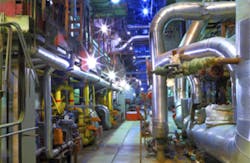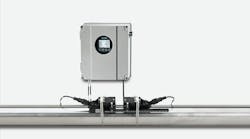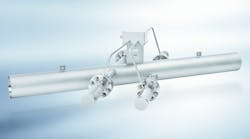RELATED: Read Part I in the "Troubleshooting Operational Issues" Series
RELATED: Read Part II in the "Troubleshooting Operational Issues" Series
RELATED: Read Part III in the "Troubleshooting Operational Issues" Series
RELATED: Read Part IV in the "Troubleshooting Operational Issues" SeriesRELATED: Read Part V in the "Troubleshooting Operational Issues" Series
RELATED: Read Part VI in the "Troubleshooting Operational Issues" Series
The following article is the latest in a series based on troubleshooting a mysterious unit shutdown due to flowmeter performance problems.
The problem: Liquid ammonia entering a unit with gas bubbles that caused an ultrasonic flowmeter to break its ultrasonic circuit, measure zero flow, and scram (shut down) the reactor. Installing a jacketed pipe to cool the stream reduced the number of scrams. Installing a larger cooler and/or insulating the 200 meters of upstream piping were not viable options.
Remember that the vapor pressure of ammonia (and hence the pressure in the ammonia tank) changes significantly with the ammonia temperature. In cold and hot weather, the ammonia tank could exhibit pressures as low as 6 and as high as 10 to 12 bar, respectively.
Adjusting the pressure controller setpoint at the maximum desired pressure, the control valve will tend to be more closed in warm weather and more open in cooler weather. Therefore, in warm weather, the control loop presents more of a restriction to the ammonia flow and tends to create a larger pressure drop across the control valve. As a result, not only is the control valve discharge pressure closer to the vapor pressure in warm weather (because its setpoint is only slightly above the tank pressure in warm weather), but the local pressure inside the control valve may fall below the vapor pressure and create bubbles that may not condense when pressure is recovered downstream of the control valve. These bubbles—created by the control valve—can then travel down the pipe and affect the ultrasonic flowmeter in the unit downstream.
What would you do to resolve this problem?
RELATED: Read Part VIII in the "Troubleshooting Operational Isssues" SeriesRELATED: Read Part IX in the "Troubleshooting Operational Isssues" Series
RELATED: Read Part X in the "Troubleshooting Operational Isssues" Series
David W. Spitzer is a regular contributor to Flow Control magazine and a principal in Spitzer and Boyes, LLC offering engineering, seminars, strategic, marketing consulting, distribution consulting and expert witness services for manufacturing and automation companies. Spitzer and Boyes is also the publisher of the Industrial Automation Insider. Mr. Spitzer has more than 35 years of experience and has written over 10 books and 300 articles about flow measurement, instrumentation and process control.Mr. Spitzer can be reached at 845 623-1830 or www.spitzerandboyes.com. Click on the “Products” tab to find his “Consumer Guides” to various flow and level measurement technologies.




